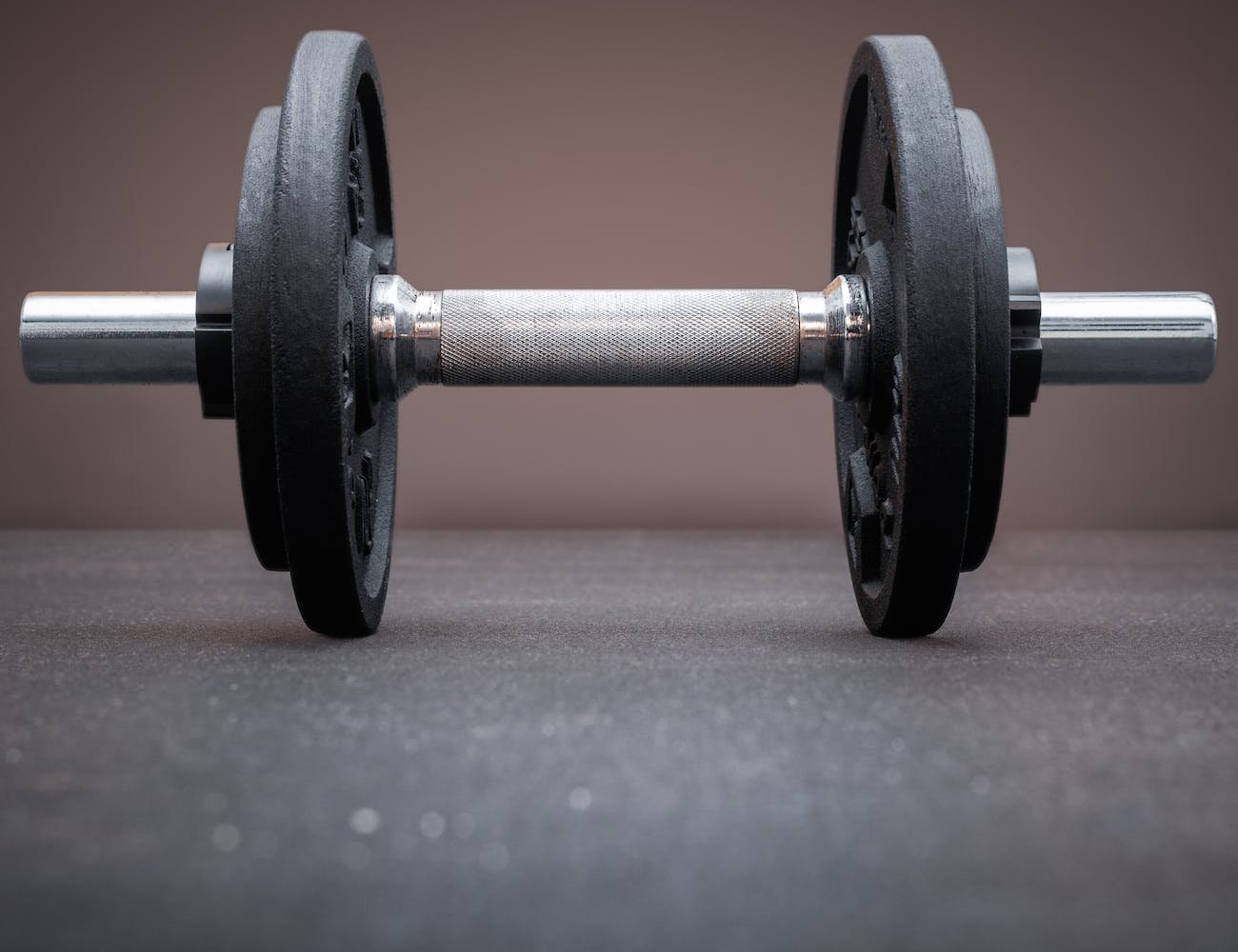Aerobics for Beginners: Tips and Tricks for Getting Started
While you might think aerobics is reserved for the supremely fit, I’m here to tell you it’s accessible for everyone, even if you’re just starting out. As a fitness writer with years of experience guiding beginners, I’ve seen firsthand the transformation that aerobics can bring, not just physically, but also mentally.
Choosing the right gear doesn’t have to be a daunting task—I’ll share insights on what’s essential and what’s simply marketing fluff. I’ll walk you through finding a class that aligns with your current fitness level and personal preferences, and I’ll break down those seemingly complex moves into manageable steps.
But before you lace up your sneakers and jump into a high-energy routine, let’s set some achievable goals and understand why mastering your breathing is as important as the workout itself. Stay with me, and I’ll unveil how integrating a healthy diet can amplify your efforts and ensure that the progress you make is not only visible but sustainable.
Understanding Aerobic Exercise
Aerobic exercise, often referred to as cardio, is a cornerstone of physical fitness, involving sustained, rhythmic activities that boost heart rate and increase oxygen flow throughout the body. I’ve come to recognize its unparalleled importance in my journey towards a healthier lifestyle. The cardio benefits are extensive, touching on everything from heart health to mental well-being.
When I lace up my sneakers for a run or hop on a bike, I’m not just burning calories; I’m empowering my heart to pump more efficiently, reducing my risk of cardiovascular disease. It’s a liberating feeling, knowing that each step or pedal stroke contributes to a stronger, more resilient me. Moreover, the endorphin rush post-workout is a natural high that combats stress and fosters a sense of freedom.
Exercise intensity plays a pivotal role in maximizing these cardio benefits. I’ve learned that it’s not just about the duration but how hard I push myself. High-intensity interval training (HIIT) has been a game-changer for me. By alternating between bursts of intense activity and periods of rest or lower intensity, I’ve seen my fitness levels soar. It’s liberating to know I can achieve significant health benefits in shorter workout sessions, fitting seamlessly into my busy life.
Understanding the balance between moderate and vigorous exercise intensity helps me listen to my body and tailor my workouts accordingly. Some days, a brisk walk is enough to get my heart rate up; other times, I crave the challenge of a steep hike or a sprint session. It’s about finding that sweet spot where I’m pushing my limits while still relishing the freedom that movement brings.
Choosing the Right Gear
Selecting appropriate attire and equipment is crucial for maximizing comfort and performance during aerobic workouts. When I’m gearing up for a session, I focus on two main aspects: footwear selection and comfortable attire. It’s not just about looking good; it’s about feeling free and unrestricted, ready to tackle every move with confidence.
Footwear selection is the cornerstone of my workout gear. The right shoes can make a world of difference, providing support and cushioning where I need it most. I always look for lightweight options with good arch support and breathable material to keep my feet cool and comfy. On the other hand, comfortable attire means choosing fabrics that wick away sweat and pieces that fit well without being too tight or too loose.
Here’s a quick table I put together to help you get started:
| Gear Type | What to Look For |
|---|---|
| Footwear | Good arch support, cushioning, breathability |
| Tops | Sweat-wicking fabric, snug but not constricting fit |
| Bottoms | Flexibility, comfort, moisture management |
Finding the Perfect Class
Embarking on the quest for the ideal aerobics class, I prioritize finding a balance between a challenging workout and an encouraging atmosphere. It’s important that the class not only pushes me to my limits but also creates a space where I feel motivated and free to move at my own pace.
An electrifying class atmosphere is essential. It should buzz with energy and positivity, making me eager to return. After all, the vibe of the class can make or break my commitment to an aerobics routine. I look for spaces filled with encouragement, where every participant is cheered on, no matter their skill level.
Instructor credentials can’t be overlooked. A certified instructor with a wealth of experience inspires confidence in their ability to guide beginners like myself. They should demonstrate proper form, offer modifications, and ensure everyone’s safety. Most importantly, they should be approachable, ready to address any concerns I might have.
To make this hunt less daunting, here’s a quick checklist I follow:
- Vibrant Class Atmosphere: Does the class energy lift my spirits and motivate me?
- Qualified Instructor: Do they’ve the credentials and experience to lead a beginner-friendly class?
- Personal Comfort: Do I feel free to be myself and progress at my own pace?
Finding the perfect class means seeking a blend of these elements. I want a space where I can thrive, challenge myself, and most importantly, enjoy the freedom of movement. It’s about creating a sustainable practice that contributes to my overall happiness and well-being.
Learning Basic Moves
Now that I’ve found a class that fits my schedule and fitness level, it’s time to focus on nailing down the basic moves of aerobics.
Understanding the fundamental steps is key; they’re the building blocks for all the routines I’ll learn.
I’ll also need to get the hang of moving to the beat, as rhythm and coordination are essential to making the most out of every workout.
Mastering Fundamental Steps
Before diving into complex routines, it’s essential to master the basic steps that form the foundation of all aerobics classes. I’ve found it’s all about getting comfortable with the rhythm and learning to anticipate the instructor cues. This means practicing until I can perform step variations effortlessly.
To keep my learning curve steep and exciting, I focus on these key moves:
- The basic step: stepping up and down on the platform.
- The grapevine: a criss-crossing step that moves me side to side.
- The V-step: creating a V shape with my feet, in and out.
These moves are my aerobics alphabet; once I’ve got these down, I’m free to spell out any routine. It’s liberating to move with confidence, knowing I’ve built a solid foundation.
Rhythm and Coordination Essentials
Having mastered the basic steps, I find that focusing on rhythm and coordination is the next crucial step to enhance my aerobics practice.
It’s all about letting my body sync with the beat, transforming movements into a fluid dance pattern that feels like freedom.
As I repeat these patterns, muscle memory kicks in, making complex sequences second nature.
This isn’t just about exercise; it’s a dance where I’m both the choreographer and the performer.
I’m not just working out; I’m expressing myself through motion.
And with every session, my coordination improves, allowing me to tackle more challenging routines with confidence.
I’m learning to trust my body’s ability to move with grace and precision, which is incredibly empowering.
Setting Realistic Goals
Embarking on your aerobics journey, it’s crucial to set achievable goals that align with your fitness level and lifestyle. This is where goal prioritization becomes my guiding star. I craft a list of objectives that aren’t only significant to me but are also structured in a way that propels me towards those sweet motivation milestones.
I find that breaking my aspirations down into bite-sized achievements keeps me on track without feeling overwhelmed. Here’s how I approach it:
- Short-term Goals: I set immediate targets, like completing a full aerobics class without stopping or mastering a new move each week.
- Mid-term Milestones: These are my stepping stones, such as improving my endurance to double my workout time within a month.
- Long-term Aspirations: And of course, the big picture—where I aim to be in six months, maybe participating in a dance-aerobics showcase or achieving a significant health milestone.
This structure helps me stay focused, giving me clear checkpoints to strive for and celebrate along the way. I’m all about giving myself the freedom to adjust these goals as I progress because, let’s be real, life happens, and flexibility is key to staying committed.
I keep my goals visible, whether it’s on a sticky note on my fridge or a digital reminder on my phone, as a daily nudge to keep pushing forward. They’re realistic, tailored to me, and they bridge the gap between where I’m and where I want to be. By staying true to this personalized goal-setting strategy, I’m not just dreaming of success—I’m planning for it.
Mastering Breathing Techniques
As I step up the pace in my aerobic workouts, I’ve realized that mastering my breathing is key to boosting stamina and performance.
Learning to synchronize my breath with my movements has helped me exercise more efficiently, especially through techniques like rhythmic breathing.
I’ll also show you how diaphragmatic breathing can power your workouts and keep you well-oxygenated.
Breathe With Rhythm
Mastering the rhythm of your breath can transform your aerobic workout, enhancing both your stamina and overall experience. As I’ve gotten deeper into aerobics, I’ve found that syncing my breathing with my movements not only helps with pulse monitoring but also acts as a form of stress relief. It’s like I’m dancing with my own breath, and the freedom that brings is incredible.
Here are a few strategies I’ve picked up along the way:
- Inhale deeply through the nose, filling your lungs fully before a challenging move.
- Exhale through the mouth during exertion, like when lifting your body or during a crunch.
- Practice rhythmic breathing to the beat of the music or your steps, creating a cadence that keeps you focused and energized.
Diaphragmatic Breathing Basics
Delving into diaphragmatic breathing, I’ve discovered it’s a game-changer for enhancing oxygen flow and improving core stability during aerobic exercises. This technique, often referred to as belly breathing, maximizes lung capacity and breath control, fundamental to powering through a session with vigor.
Here’s how I do it:
- I start by getting comfortable, either sitting or lying down, and place one hand on my chest and the other on my belly.
- I breathe in slowly through my nose, feeling my diaphragm expand, not my chest.
- I hold it briefly, then exhale through pursed lips, engaging my abdominal muscles to push all the air out.
Oxygenate During Exercise
To elevate your aerobic workout, it’s crucial to refine your breathing techniques, ensuring your muscles receive the oxygen they need for peak performance. I’m always conscious of how I breathe during exercise because it directly influences my lung capacity and energy levels. Here are some strategies I’ve adopted to enhance oxygenation:
- Sync Breath with Movement: I coordinate my inhales and exhales with my movements to create a rhythm that maximizes airflow.
- Deep Belly Breathing: I focus on filling my abdomen, not just my chest, to draw in more air.
- Pace Adjustment: At higher altitudes, where oxygen is scarcer, I’ll adjust my pace to accommodate altitude effects on my breathing and endurance.
These techniques have been game-changers, allowing me to exercise with a sense of freedom and vitality.
Incorporating a Healthy Diet
Coupling your aerobics regimen with a nutritious diet can significantly amplify your health benefits and fitness goals. As I embark on this journey, I’ve found that being mindful of what I eat is essential. Calorie counting isn’t about restricting myself; it’s a method to ensure that I’m fueling my body efficiently. By paying attention to my intake, I can balance the calories I consume with those I burn during my workouts.
Meal planning is my secret weapon against impulse eating and poor choices. I take time each week to craft a menu that’s as diverse as it’s delicious, packed with vegetables, lean proteins, whole grains, and healthy fats. This approach doesn’t just keep my diet on track; it also saves me time and stress, as I’m never left scrambling to find a healthy meal.
I focus on whole foods and steer clear of processed items. Snacks aren’t my enemy, but I choose them wisely—think an apple over apple-flavored candy. Hydration is another critical aspect, and I make sure to drink plenty of water throughout the day to support my metabolism and aid recovery after sweat sessions.
Indulging occasionally is part of the freedom I enjoy. I don’t let diet dictate my life, but I do let it enhance it. By eating well, I’m not just looking after my waistline; I’m investing in my energy levels, my mood, and my overall well-being. With aerobics and a healthy diet hand in hand, I’m not just working out; I’m working towards a happier, healthier me.
Tracking Progress and Staying Motivated
While maintaining a balanced diet is a cornerstone of fitness, tracking progress and staying motivated are just as crucial in sustaining an effective aerobics routine. For me, setting clear, achievable goals and celebrating milestones have been game changers. It’s about embracing the journey and recognizing that every step, no matter how small, moves me closer to my fitness aspirations.
I’ve found that exercise journaling is an empowering tool. It allows me to see where I started, how far I’ve come, and where I might need to adjust my approach. Here’s what I focus on in my journal:
- Workout Duration and Intensity: I note how long I’ve worked out and how intense the session was.
- Mood and Energy Levels: I track how I feel before and after exercise to understand its impact on my day.
- Personal Achievements: Whether it’s a longer workout or a higher intensity level, I write it down.
This record-keeping doesn’t just serve as a log; it’s a source of motivation on the days when my energy dips or when I feel like I’m not making progress.
Additionally, I’ve implemented reward systems. For instance, after completing a set number of workouts, I’ll treat myself to something I enjoy, like a movie night or a small shopping spree. These incentives encourage me to stick with my routine even when the initial excitement wanes.
Staying motivated in my aerobics journey means embracing the freedom to design a routine that’s enjoyable, setting personal rewards, and keeping an honest account of my progress. It’s a blend of discipline and self-care that keeps me returning to my workouts with enthusiasm.
Frequently Asked Questions
How Do I Manage Joint Pain or Discomfort That Occurs During or After Aerobic Workouts?
To manage joint pain during workouts, I focus on joint protection and injury prevention by warming up properly, pacing myself, and using supportive gear. It’s crucial to listen to my body’s signals.
Can Aerobics Improve Mental Health or Cognitive Function, and if So, How?
Yes, aerobics can enhance mental health by providing a brain boost and mood elevation. It increases blood flow to the brain, which improves cognitive function and reduces stress and anxiety.
Are There Specific Aerobic Exercises That Can Help With Back Pain or Posture Correction?
Yes, core strengthening exercises, like planks, coupled with gentle stretching, such as yoga, can significantly ease back pain and improve my posture, granting me the freedom to move with ease and confidence.
How Do I Handle Feeling Self-Conscious or Embarrassed When Starting Out in Group Classes?
I’m overcoming intimidation by embracing imperfection when I join group classes. It’s about my journey to freedom, not perfection, and everyone starts somewhere. I focus on progress, not others’ opinions.
What Are the Best Ways to Prevent or Treat Blisters and Foot Discomfort From Aerobic Activities, Especially When Breaking in New Shoes?
To prevent blisters, I choose moisture-wicking socks and ensure my new shoes fit properly. I stay hydrated to maintain skin elasticity, reducing friction and discomfort during my aerobic workouts.
Conclusion
My journey into aerobics has been a dance through a garden of vitality. I’ve blossomed in strength, weaving through the rhythms of health like a butterfly in spring.
With each step, I’ve felt more alive, the beat of my heart syncing with the music of movement.
Remember, this path is yours to skip along. Keep your spirits high and your goals in sight, and you’ll find your fitness landscape transforming, one joyful leap at a time.
Let’s keep moving!




Leave a Reply
You must be logged in to post a comment.